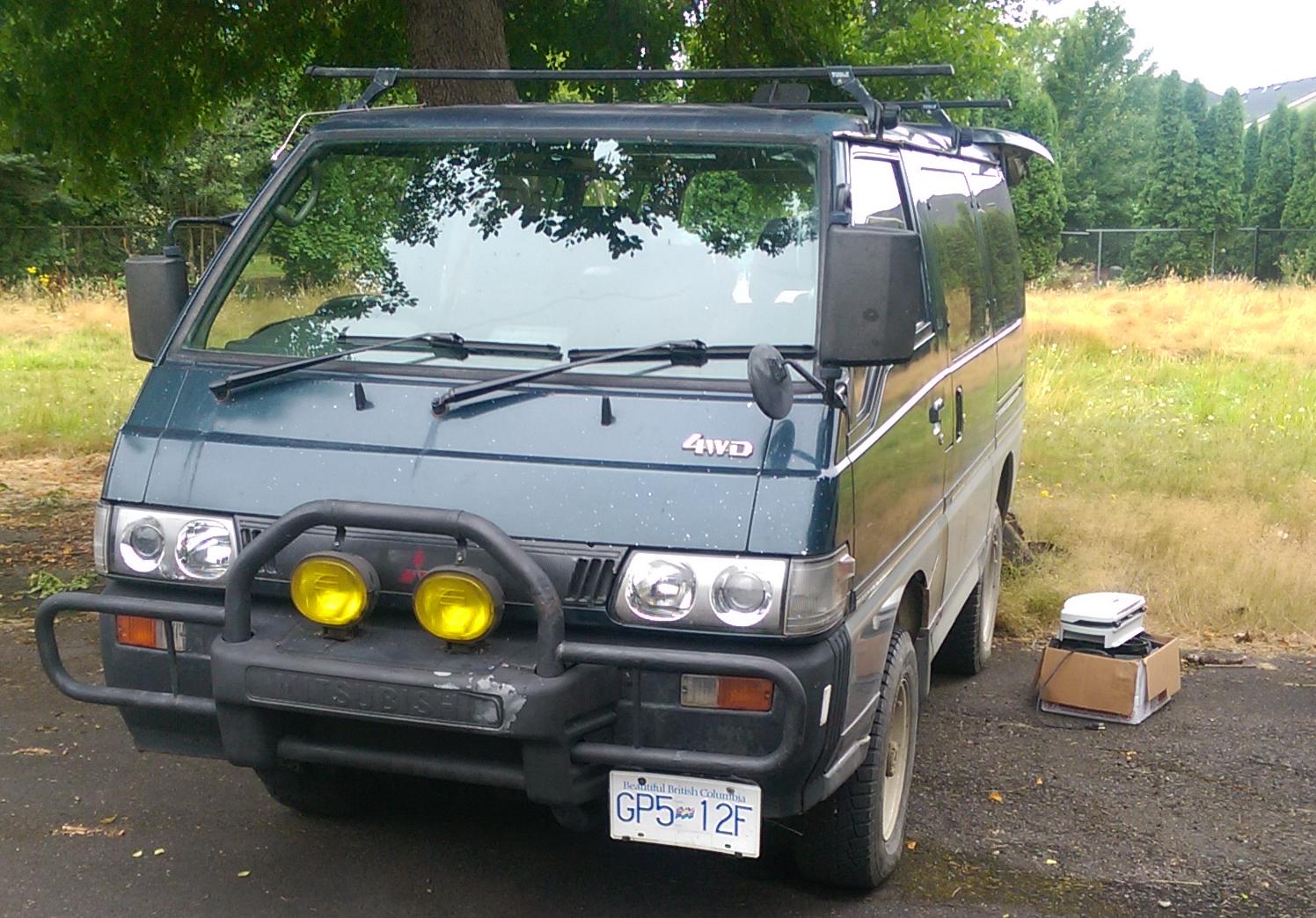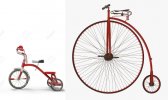moroza
Active Member
...rust, is how I'd describe this particular specimen of a P25W-SNPT, a 1991 Delica Exceed L300 4wd manual turbodiesel SWB low-roof. I'm a semi-retired mechanic who did a job/favor for a friend: finding one, traveling out to it, reporting that it's an ill-maintained rustbucket and advising in no uncertain terms that he not buy it... and driving it back when he decided to buy it anyway. Now it's my problem, on his dime. So it goes.

It has a long list of issues but actually drives pretty well. 338k km, and I believe the transmission and possibly the engine are not original. We won't run an automatic no way no how, but the gearing with the manual is way too short. An auto one I saw spun ~2500 at ~105kph; this one is screaming at ~3100 at the same speed and feels like it wants another gear. The chassis, while not exactly a BMW on the highway, feels stable enough at 110-120, but the gearing sells it short and discourages going over 90. In spite of which, the first two tanks were 9.0 and 8.7 L/100km (26.4 and 27.2mpg), mostly 90kph cruising.
First question: what have people's experiences been, installing taller final drives? Any six-speed options? Or a fifth gear somewhere around .75? Theoretically, to match the autos I'd run a 3.80. A 4D55-powered Mighty Max I previously owned, with the same trans ratios, felt quite reasonable with a 4.10 and repeatedly did 7.4L/100km (32mpg) at 110kph (65mph) and ~8.8-9 (26-27mpg) overall - fantastic for a 4x4 truck IMO. The Deli is significantly heavier (~3900lb vs ~3000) but on the highway that matters less than aero, which is similar(ly bad). I'm thinking of 4.10, 4.22, or 4.30. I understand some of these had a 7.5" front diff and some had 8"; I've yet to investigate the K-code.
Among the problems are a total lack of maintenance except oil changes, and even those I suspect were botched (one receipt I found suggested gasoline engine oil was used). With fingers crossed and four-leaf clovers shoved in my ears, it made the ~1300km drive home without incident, but the timing belts need changed immediately.
Second question: does the 4D56 use the same timing belt parts as a 4D55? The latter was sold in the US, and some sources say the belts are the same, while others (including the Mitsubishi EPC) imply they're different.
Two general observations:
1. Importation was very easy. $60, one piece of paper, and half an hour. I was originally worried they'd demand harder evidence of a build date (there are none on the vehicle itself) but I don't think they inspected it at all and just went by what the Canadian registration said.
2. This thing is better-designed and better-made than previous Mitsubishi products had led me to expect. While I still consider late 80's to mid-90's Toyota to be #1 for overall build quality and general we-thought-this-sh*t-through-ness, this Delica appears to be not far behind. The engineering and design effort put into it shows. I've only briefly driven a contemporary HiAce and never a Lite or TownAce, so the only direct competitor I can compare to is the T3 Vanagon, which appears to do nothing better and many things significantly worse than the L300.

It has a long list of issues but actually drives pretty well. 338k km, and I believe the transmission and possibly the engine are not original. We won't run an automatic no way no how, but the gearing with the manual is way too short. An auto one I saw spun ~2500 at ~105kph; this one is screaming at ~3100 at the same speed and feels like it wants another gear. The chassis, while not exactly a BMW on the highway, feels stable enough at 110-120, but the gearing sells it short and discourages going over 90. In spite of which, the first two tanks were 9.0 and 8.7 L/100km (26.4 and 27.2mpg), mostly 90kph cruising.
First question: what have people's experiences been, installing taller final drives? Any six-speed options? Or a fifth gear somewhere around .75? Theoretically, to match the autos I'd run a 3.80. A 4D55-powered Mighty Max I previously owned, with the same trans ratios, felt quite reasonable with a 4.10 and repeatedly did 7.4L/100km (32mpg) at 110kph (65mph) and ~8.8-9 (26-27mpg) overall - fantastic for a 4x4 truck IMO. The Deli is significantly heavier (~3900lb vs ~3000) but on the highway that matters less than aero, which is similar(ly bad). I'm thinking of 4.10, 4.22, or 4.30. I understand some of these had a 7.5" front diff and some had 8"; I've yet to investigate the K-code.
Among the problems are a total lack of maintenance except oil changes, and even those I suspect were botched (one receipt I found suggested gasoline engine oil was used). With fingers crossed and four-leaf clovers shoved in my ears, it made the ~1300km drive home without incident, but the timing belts need changed immediately.
Second question: does the 4D56 use the same timing belt parts as a 4D55? The latter was sold in the US, and some sources say the belts are the same, while others (including the Mitsubishi EPC) imply they're different.
Two general observations:
1. Importation was very easy. $60, one piece of paper, and half an hour. I was originally worried they'd demand harder evidence of a build date (there are none on the vehicle itself) but I don't think they inspected it at all and just went by what the Canadian registration said.
2. This thing is better-designed and better-made than previous Mitsubishi products had led me to expect. While I still consider late 80's to mid-90's Toyota to be #1 for overall build quality and general we-thought-this-sh*t-through-ness, this Delica appears to be not far behind. The engineering and design effort put into it shows. I've only briefly driven a contemporary HiAce and never a Lite or TownAce, so the only direct competitor I can compare to is the T3 Vanagon, which appears to do nothing better and many things significantly worse than the L300.
Last edited:

